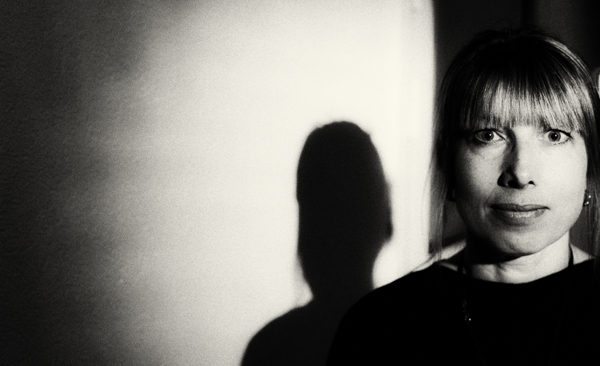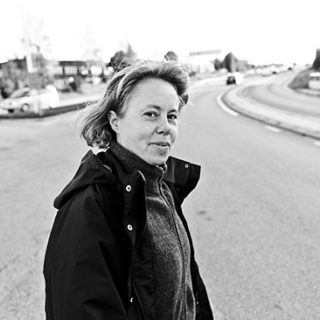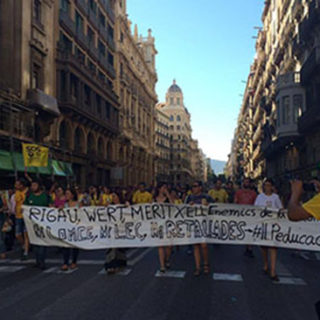The role of the individual in sustainable urban development
In her research, Maria Johansson studies how we as individuals experience our environment, but also how we behave. In their latest project, she and a group of researchers want to develop simple methods that can be used in community planning to better capture individuals’ wishes and responses to planned changes in their urban environment or similar.
Maria Johansson is a professor of environmental psychology at the Department of Architecture and the Built Environment at Lund University. In the beginning, her research was about why people choose to drive a car, but in recent years she has focused more on the aspects of community planning that support and, conversely, prevent people from walking and cycling.
“We’re trying to understand the interaction between people and the environment based on a holistic model. It’s about how we perceive the physical and social environment that surrounds us. It’s not as easy as being able to draw a straight line between the facts of a problem – that the environment is changing – and people adopting their behaviour accordingly.”
Age, sex, personality traits, and other aspects also affect how we perceive our surroundings. Maria Johansson illustrates with an example:
“An adult may, for example, appreciate the fact that there are elements of water in the city, whereas for a parent with a toddler it can be extremely stressful and threatening. The way we perceive our surroundings varies a lot throughout the course of a lifetime and based on our individual circumstances.”
Meanwhile, Maria Johansson explains that in a previous research project, Urban Walking, the researchers discovered that there certain common denominators in the environments that people experience as pleasant.
“It is important to listen to people’s experiences for a holistic view of urban planning.”
“For instance, we found that greenery was important to most people, that is, greenery that was well kept. It was important that it signalled that someone cared about the environment. That there was human presence and consideration”, says Maria Johansson, and continues:
“We are generally sensitive to micro signals like litter, sloppy graffiti, and traces of drug abuse. Breaking the norms for a safe society creates a feeling of insecurity.”
Another conclusion from the Urban Walking project was that it was not the unique urban environments that determined how often and how far people chose to walk or cycle in the city. Rather, it was the living environments that proved to be the most important.
“It was interesting to see that it mainly had to do with whether or not there were adjoining paths between the places where people spend time. If there are places along the way that feel unpleasant or insecure in any way, people tend to choose a different path or a different means of transport instead. The same was true for the way children move.”
Maria Johansson explains how important it is for children to have the opportunity to move around in their surroundings on their own.
“Research has shown that cognitive development is positively influenced by the opportunity to move around in your local environment. It’s important that you, at an early stage, get to feel that you’re part of the place where you live. Then, of course, we must not forget that moving around is also significant to our health.”
In this respect, lighting also plays an important role. The experience of walking or cycling outdoors in the evening is largely influenced by outdoor lighting.
“We live in a country where, during certain parts of the year, it is dark even during daytime when people move around outdoors, to and from school or work, for example. There is an ongoing project at Lund University on how we can support the physical environment with good and energy-efficient lighting.”
In the Lightning Metropolis project, researchers study the consequences of introducing new and more energy-efficient light sources, such as LED, in street lights.
“Greenery is often emphasised as a way to make urban environments more pleasant, but lighting is also very important. For instance, greenery can be perceived in a completely different way during night-time. The focus on outdoor lighting has previously often been about creating sufficiently well-lit and safe paths. The needs of pedestrians and cyclists have been neglected in the design of outdoor lighting. An issue that often arises in connection with introducing new light sources, such as LED, is that the light is unevenly distributed across the pathway and form a number of light and dark areas which make it more difficult to see”, says Maria Johansson.
Furthermore, the light from the new LED lamps has so far been somewhat cooler than the outdoor lighting we are normally used to. The researchers now want to look closer into how this is perceived.
“Johan Rahm is a doctoral student in environmental psychology who, among other things, is looking at how to create a simple method for capturing individuals’ experiences of the urban environment. The idea is to develop methods that are so user-friendly that municipalities can use them if they want feedback from the community in order to create environments that people enjoy”, says Maria Johansson and continues:
“We argue that it is important to listen to people’s experiences for a holistic view of urban planning, and to be able to measure whether you are on the right track. Sometimes, people are overconfident that change in society will come simply by communicating knowledge of facts. Although having certain knowledge is a prerequisite, it is not always knowledge itself that determines whether or not people will adapt to the new conditions. Above all, it’s an emotional process that leads to various decisions and behaviours.”
Text: Nina Nordh
Photo: Peter Frodin
Read more about Maria Johansson’ research







